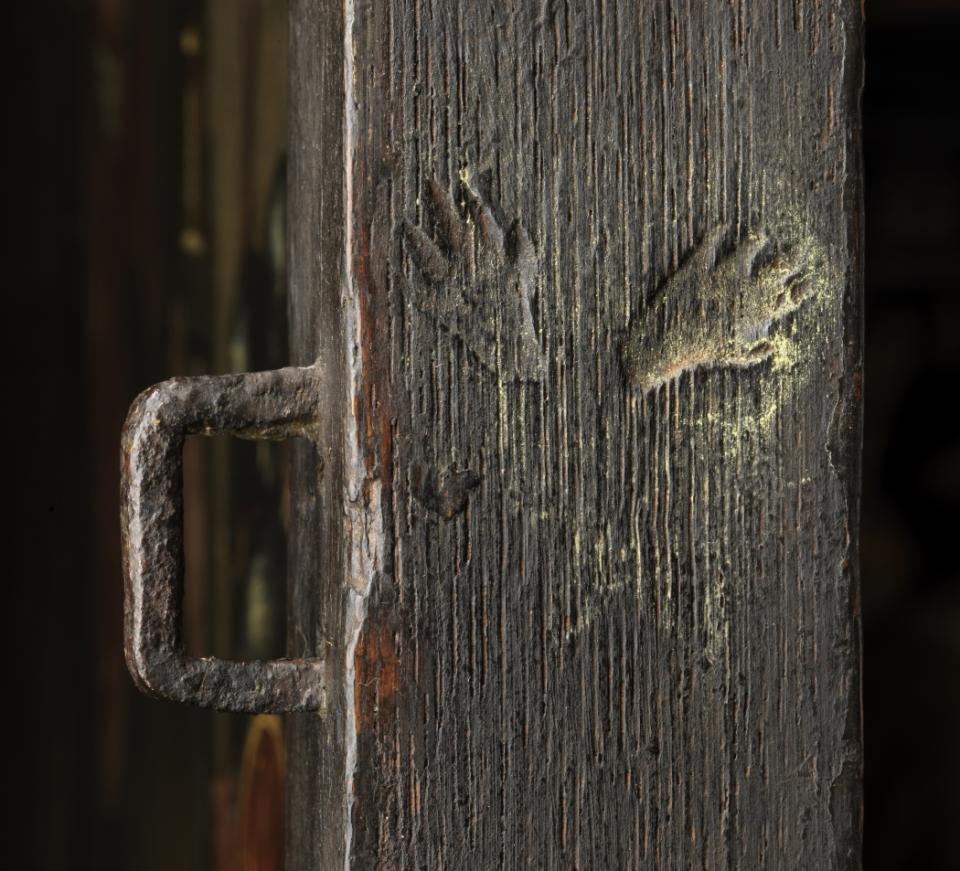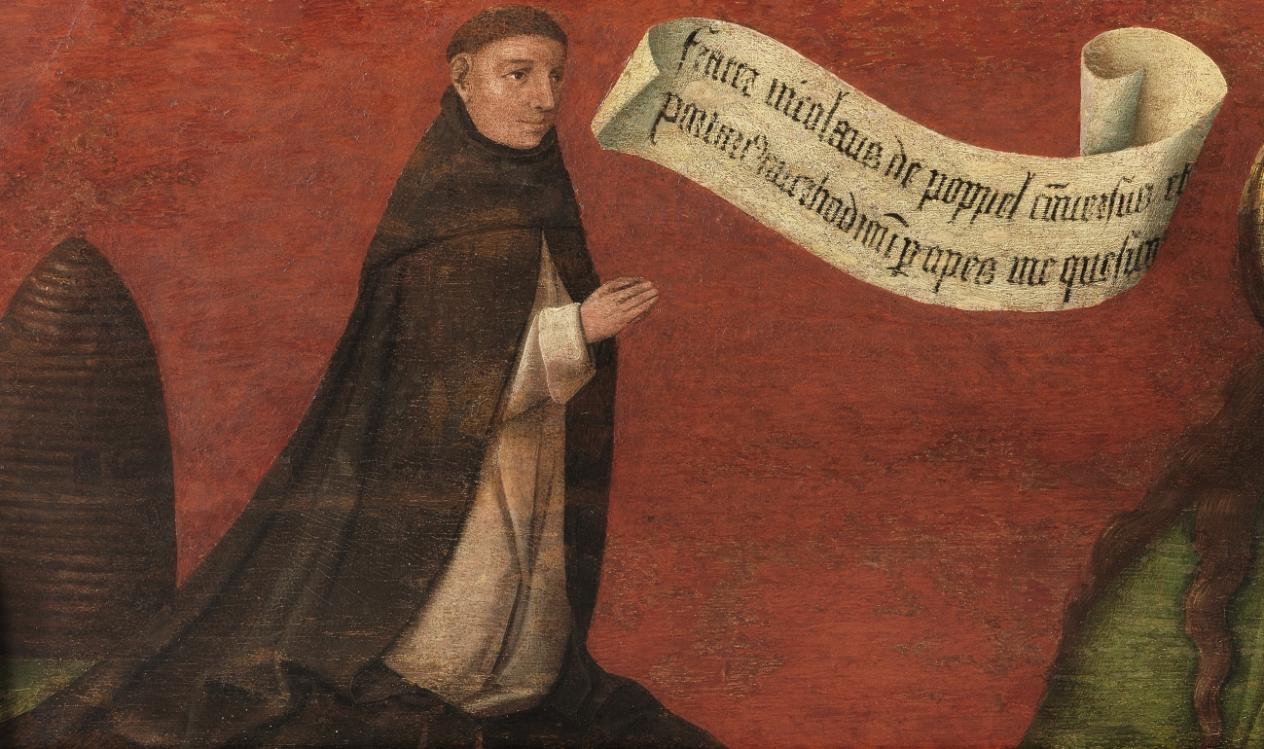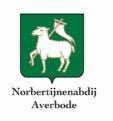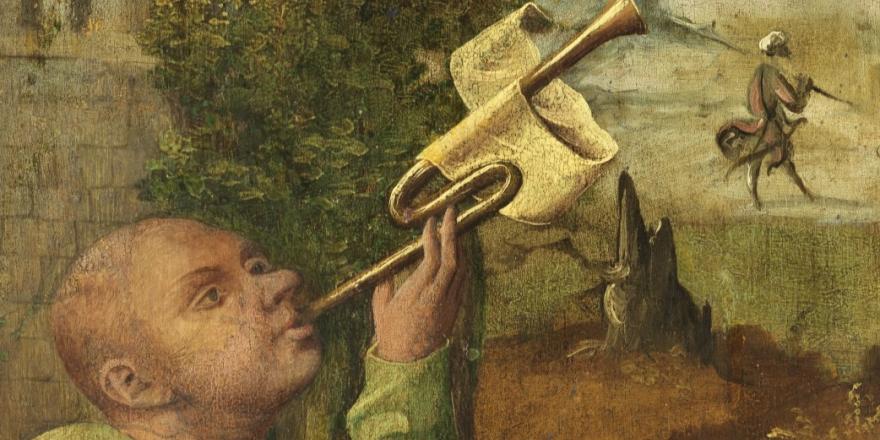Introduction
An alterpiece returns home
In the autumn of 1873, Antwerp's Museum of Antiquities decided to purchase a 16th-century altarpiece depicting the Lamentation of Christ from Averbode Abbey. For this, the museum set aside 3,500 francs, to be paid in three instalments. After a visit by the museum delegation to the Abbey, the sale was completed in 1874 and the piece was transported to Antwerp. From then on, it will be known as 'The Retable of Averbode'.
150 years later
A museum delegation heads to Averbode Abbey in autumn 2022 to investigate the return of the altarpiece. In November 2023, the loan is approved and the altarpiece is transported to Averbode.
500 years ago
The piece is shipped a first time, from Antwerp, to Averbode. In 1514, it was purchased by the abbot from Jacob van Cothem. This carver, who had his workshop in Antwerp's Kammenstraat, also worked as a dealer of altarpieces.
Description of the retable
Importance
A retable was usually placed at the back of an altar. In doing so, the believer's attention was focused on the altar and the gospel was made didactically visible. Retables displayed carved wooden statues and groups of statues depicting Bible stories. They were usually painted and gilded, giving the whole a colourful and festive appearance.
In the 15th and 16th centuries, centres like Antwerp, Brussels and Mechelen were renowned for their retables. They were exported all over Europe, destined for monasteries, guilds, brotherhoods and wealthy private individuals. It was a luxury product around which a very lucrative art trade existed.
The Averbode Retable is relatively small in size. It is a 'tabula parva', a small altar table. It consists of a sculpted central section and is flanked by two painted side panels. The whole rests on a painted base, called the predella.
Central section
The sculpted middle section shows the Lamentation of Christ. In the centre lies the dead Christ, surrounded by his closest ones. At the back, under the Gothic carvings, we see the outline of the city of Jerusalem. The body of Jesus lies stretched out on a shroud that is gently lifted by the apostle John. Jesus' left hand is held by Mary Salome (half-sister of Mary and married to Zebedee) who wears an elegant headdress. Between John and Mary Salome, Mary, the mother of Jesus, stands grievously bowed and with folded hands. To the left and right of this group are two mourning figures each, one in front and one in profile. On the right stands the beautifully dressed Mary Magdalene with an opened anointing jar in her hand.
Noticeable is the damage to the face of one of the figures and the absence of Mary Salome's left hand. We are in the dark as to when and how this damage occurred. But it had already been described in this way in the early 20th century.
The small sculpted scene at the very top, above the Gothic arcades, shows Christ in Limbo. Adam and Eve in particular stand out. There they meet Christ who, after his death on the cross, is said to have descended to the underworld to free them and all the righteous and take them to heaven.
Side panels
When open, the side panels depict the Crucifixion on the front left and the Resurrection of Christ on the front right. When the retable is closed, one sees an Ecce Homo scene on the left and an encounter of Jesus and Veronica on the right. The painter of the shutters is unknown, he or she belongs stylistically to the so-called Antwerp Mannerists, late 15th, early 16th century.
We see both Flemish primitives and Renaissance elements: the vivid colourful scenes with the elegantly depicted characters, striking (architectural) backgrounds.
Predella
The predella is probably done by someone else than the painted side panels: stylistically it is different. The predella depicts three allegorical female figures: Faith, Hope and Love.
To the left: the kneeling porter brother Nicholas Huybs and to the right: the heraldic coat of arms of abbot Gerard vander Scaeft (abbot from 1501-1531). From a banderole with a Latin text next to the porter, we learn that this friar acquired the retable thanks to the proceeds of his beekeeping.

Marks
The retable has several marks referring to the place of production and the maker.
The hand, the Antwerp engraved mark (the ponsoen/ stamp), is located on the outside of the right side wall of the retable chest and at the front of the hatch frame. It is evidence that the retable is of Antwerp manufacture.
Another engraved mark (the gouge marks) possibly refers to the wood merchant or serves as an approval mark for the wood. They are located on the back of the chest and on the inside of the right side wall.
A 'total work of art'
The oak retable is the result of true teamwork. A total of five craftsmen crafted it:
- The cabinetmaker made the chest or container into which the sculpture fitted.
- The carved part was made by a carver. For this retable, this may have been Jacob van Cothem himself.
- The mason carver made the special carvings on the basin, such as the arcades and other architectural decorations.
- The upholsterer or painter provided the polychromy on the statues and the scenes on the shutters. The gilder for decorating the figurines with gold leaf.
- Finally, the printer took care of authenticating or applying hallmarks.
How much did a retable cost?
We know from the abbey archives that in 1514 Averbode Abbey paid a total of 37 rijns guilders for the purchase of the retable and another 20 pennies for shipping it to the abbey.
It is always difficult to convert the value of then to that of today. The price of a retable - depending on its size, that is - would have corresponded to that of a bullet ship in the early 16th century.
When the Antwerp Museum of Antiquities bought the retable in 1874, it was paid 3,500 francs.
A masterpiece: why is it so special?
The Retable of Averbode was included in the Flemish Masterpiece List in 2015. It is considered rare and indispensable by the Flemish Community.
For the retable of Averbode, this means that there are few other equal or similar pieces and in the same condition in Flanders. While such Antwerp retables were exported all over Europe in the 15th and 16th centuries, many retables in north-western Europe did not survive the iconoclasm of the 16th century.
The retable is indispensable for Flanders because it has a special value for the collective memory. We know an extraordinary amount of information about it. It forms a relevant link in the art production of Flemish and Antwerp retables and other art forms.
And as a superb example of late medieval Antwerp sculpture and painting, the Averbode retable teaches us a lot about retable art itself and thus has a calibration value.
It also has special artistic value: the composition of the sculpture has been described as masterful. Early literature describes the retable as a 'pearl of late Gothic Antwerp sculpture'. And the retable as a whole may be relatively small, but the central sculpted section is very large.
Caring for a masterpiece
Managing a piece in a non-museum space
Preparation when presenting an object in a non-museum setting takes time. The risk factors were reviewed intensively and critically together with the Conservation & Management department of the city of Antwerp, the borrower, the Topstukkenraad Vlaanderen, collection owner MAS and external partners.
The property is very fragile. The retable is presented in a passive climate display case to protect it from dust, light, vermin, theft, vandalism and climate fluctuations. Special devices allow the values to be monitored in real time and to intervene if necessary.
Back home: a long-term loan
The MAS focuses on connection: it makes the links between people and their heritage from different worlds of thought and life visible and understandable. The involvement of relevant communities and partners is therefore very important. For the MAS, it is important to show the Averbode Altarpiece in the place for which it was made. By displaying it there again, the MAS reinforces the significance of this important art and cultural-historical heritage. And so the public can enjoy it permanently.

Detail of the predella
Flemish masters in situ
The return of the Averbode retable is made possible thanks to the financial cooperation of the project 'Flemish masters in situ' by Tourism Flanders and OKV (Public Art Property Flanders). That project aims to present Flemish public art property in its original place.
In Flanders, you can still find dozens of paintings, statues, retables and other works in the place for which they were once made, or where they have often been for centuries. Sometimes in our renowned art cities, sometimes in lesser-known but equally beautiful towns and villages. They often used to remain somewhat under the radar, but now we have mapped them out for you - literally.
Project realisation
- Averbode Abbey: Abbot Marc Fierens, archivist Herman Janssens
- Project team City of Antwerp: Tommy Andries, Marina Christiaens, Vera De Boeck, Ann Op de Beeck, in collaboration with the MAS team and the department Conservation & Management of the City of Antwerp
- Showcase: Solutions
- Art transport: Hizkia
- Climate monitoring: climate team departement Conservation & Management City of Antwerp (software application Charp)
- Retable monitoring: ChromArt and restorers from the department Conservation & Management
- In cooperation with: the Culture, Youth and Media Administration / Topstukkenraad van de Vlaamse Gemeenschap
- With the support of: Flemish masters in situ (Tourism Flanders and OKV)
 |  |


